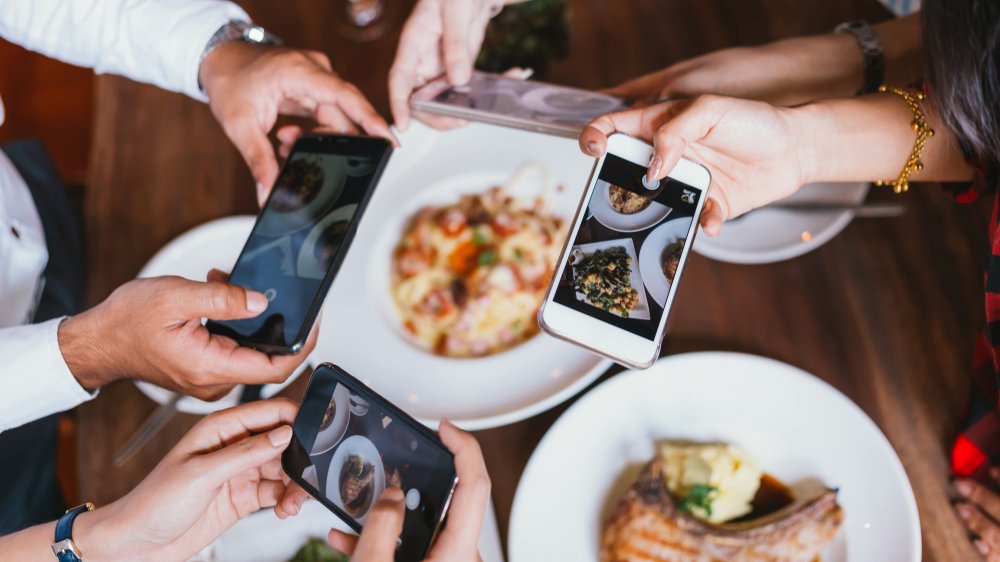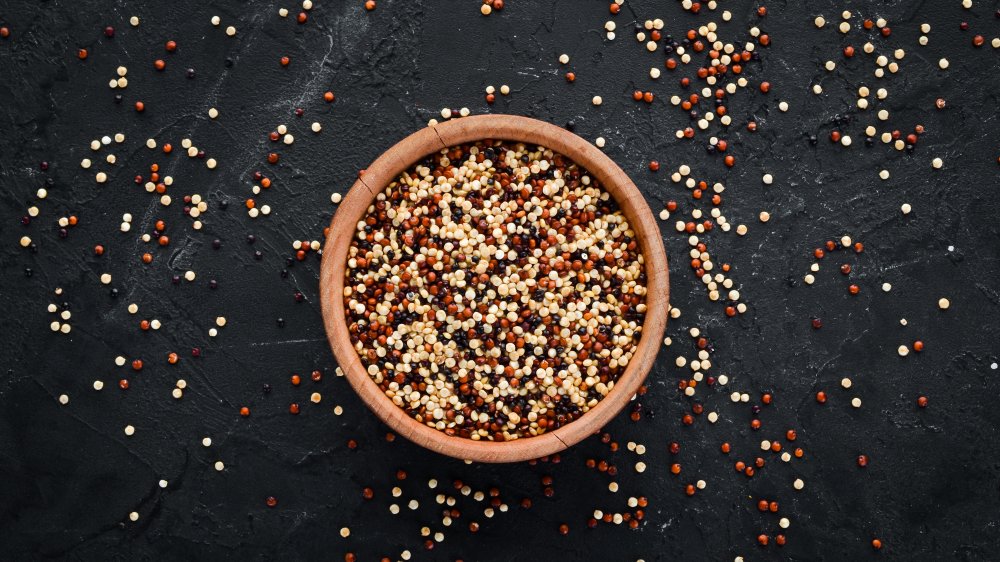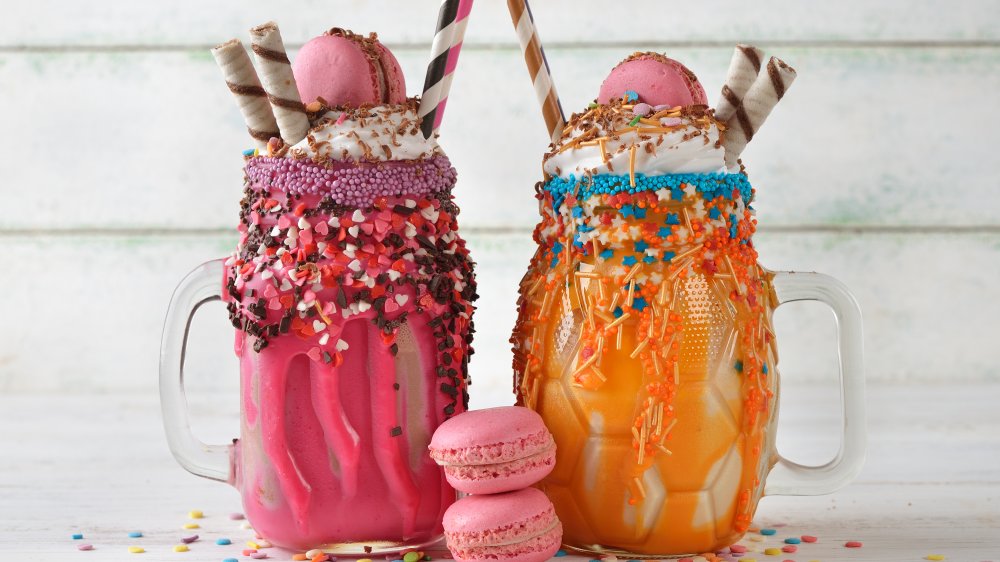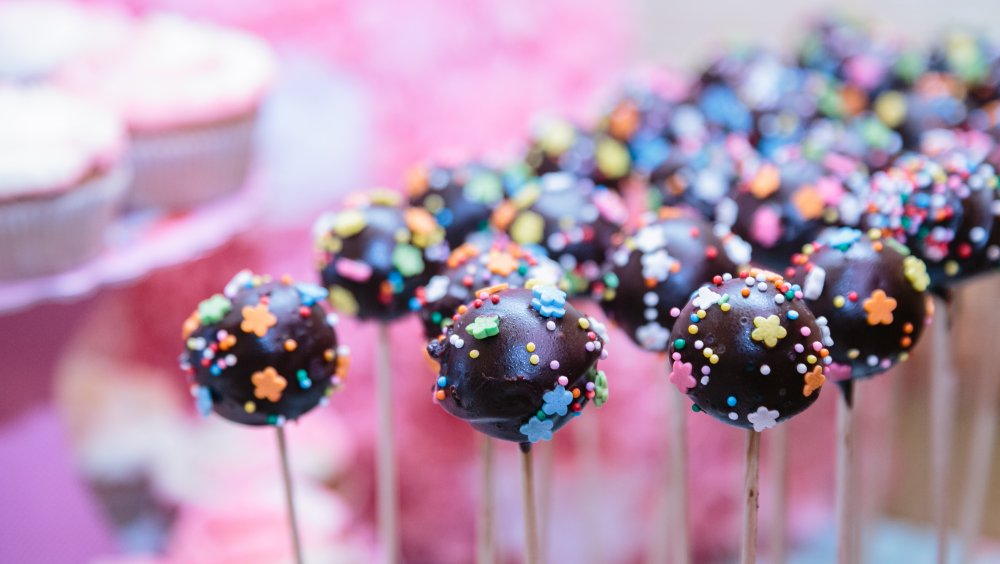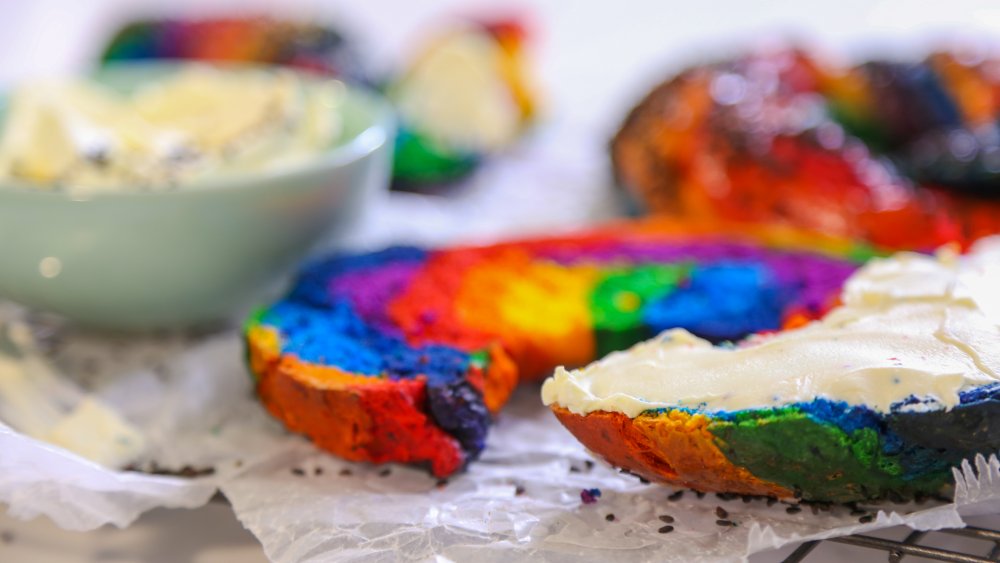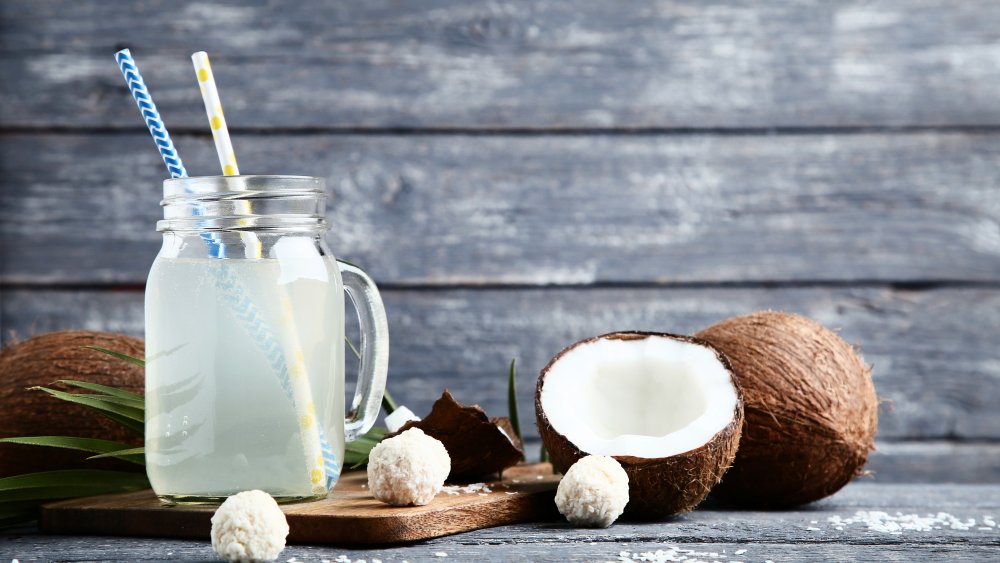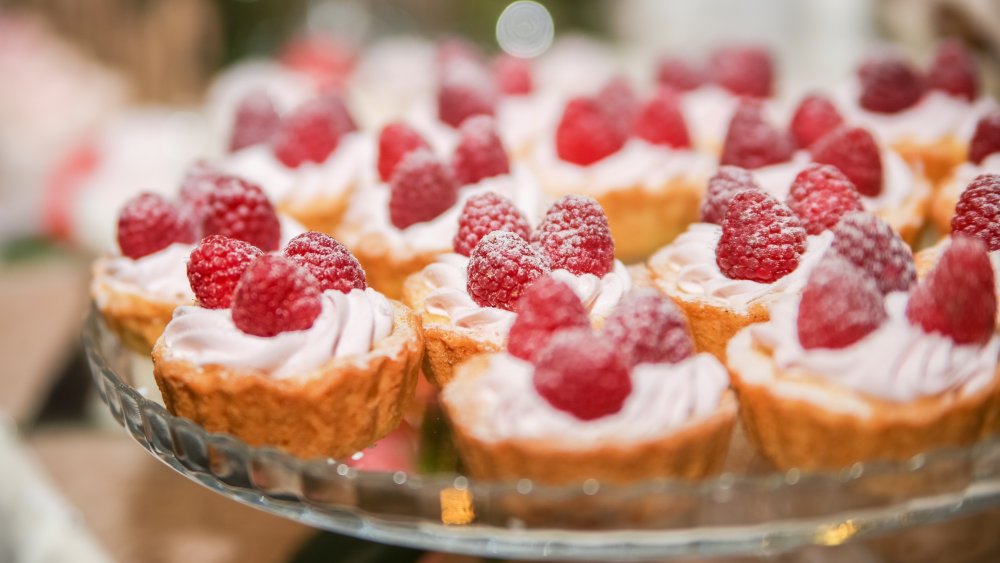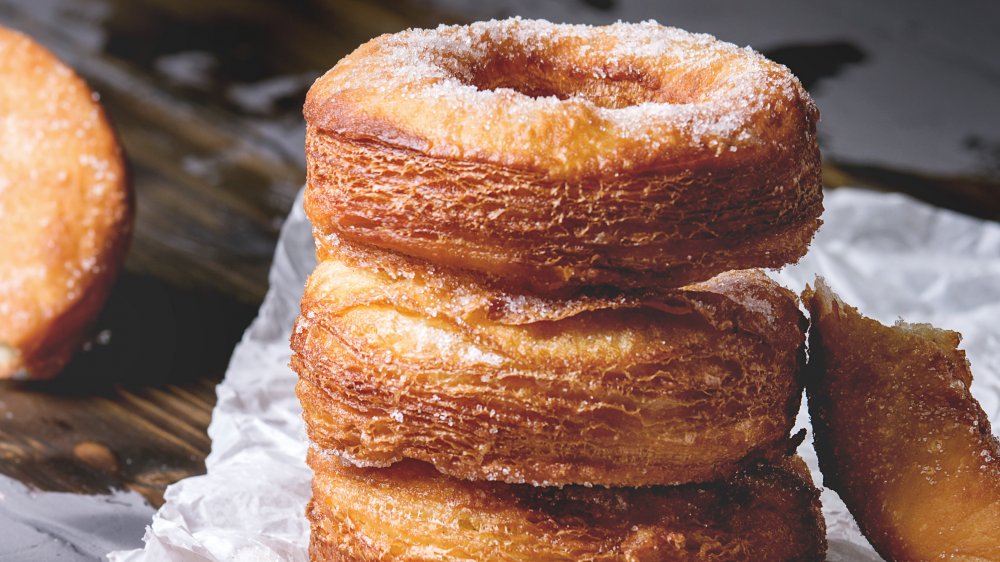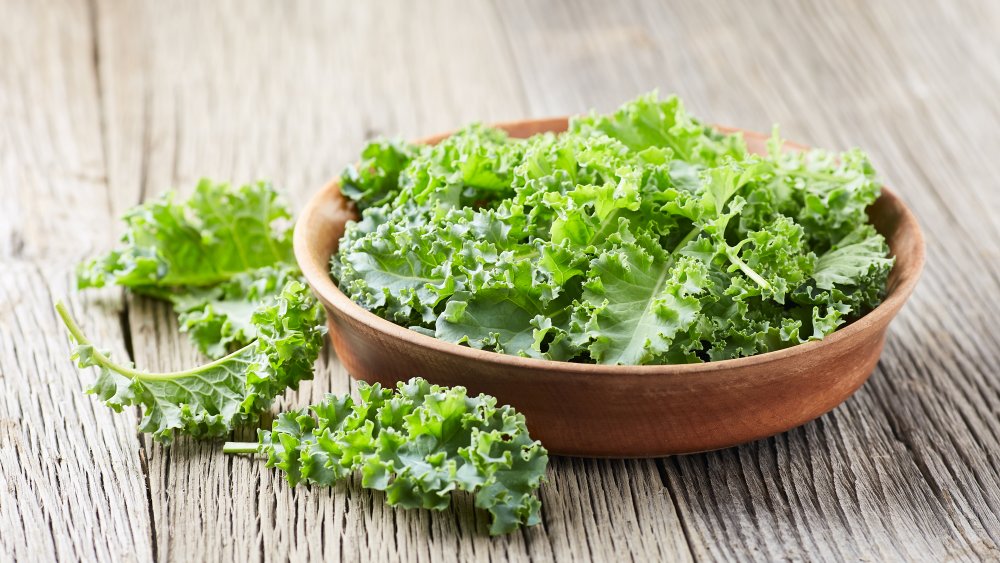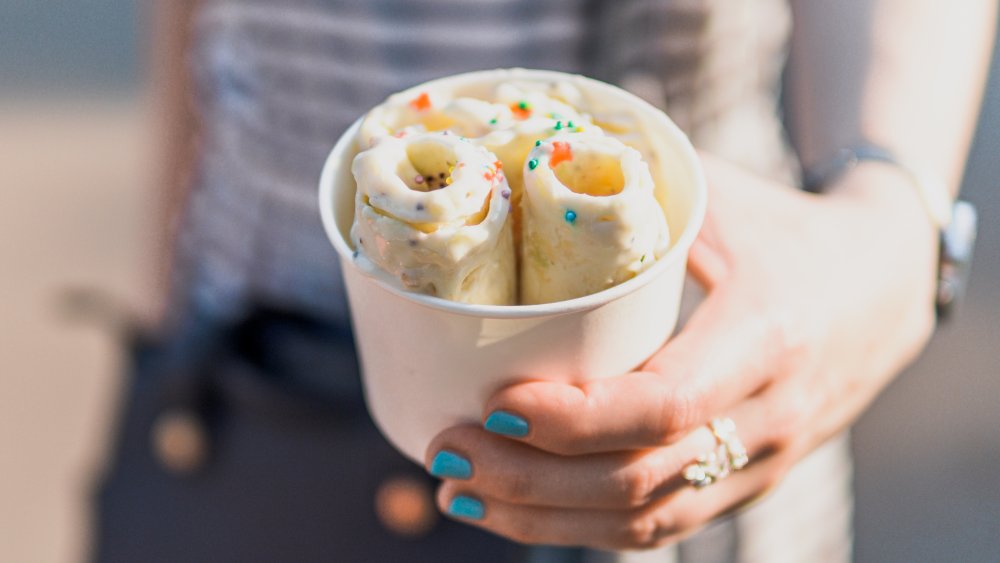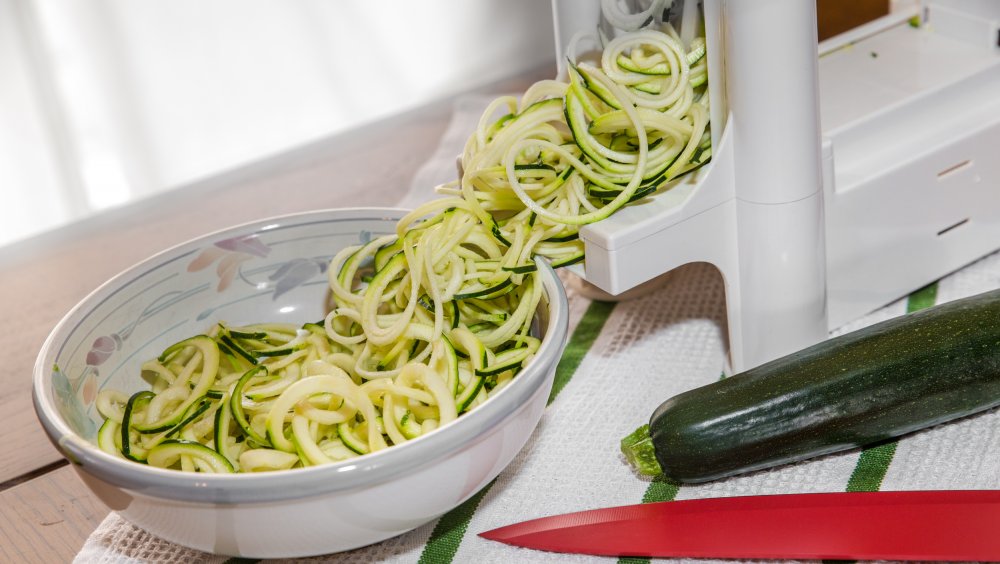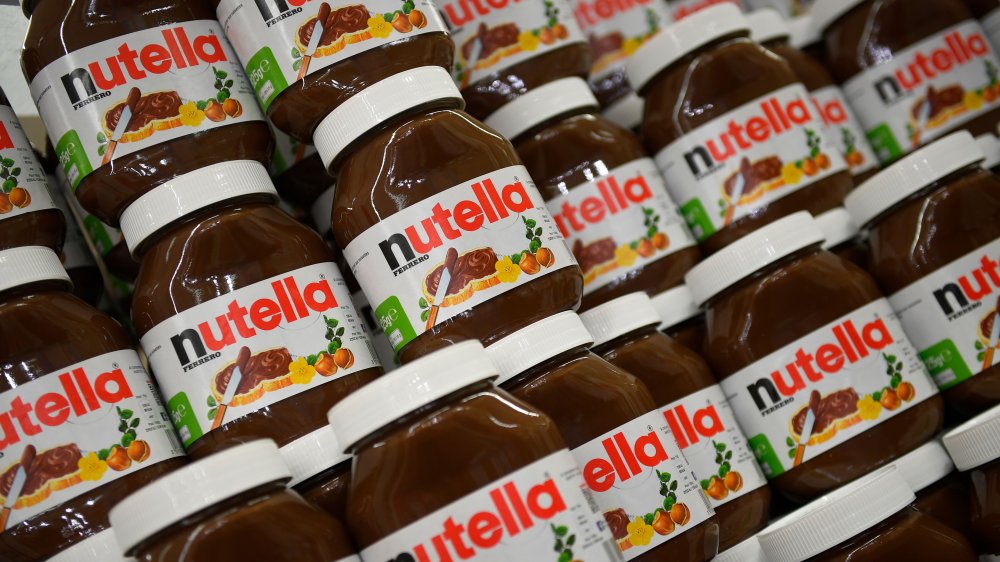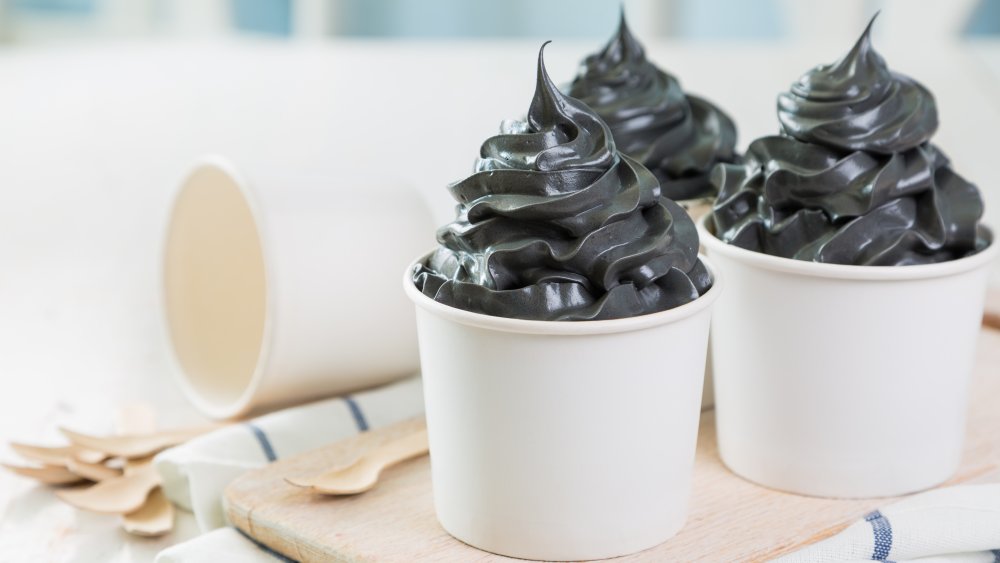Food Trends From This Past Decade We've Already Forgotten About
Finishing out a decade doesn't come around too often — only every 10 years to be exact. And with that measurement of time, and the closing of another chapter, comes the opportunity to reflect.
It's the opportunity to reflect on all of the ridiculous food trends that have graced restaurants, grocery store shelves, and hungry stomachs with their presence over the last 10 years.
Let's face it. Food trends come and go, whether it's all thanks to a company's excellent advertising work, a dietitian claiming it's the next best health food, or the sheer power of popularity on social media. But whatever way the trend has gained its fame in the past decade, all good things must come to an end, and there may be a few that no one will even really remember by the time 2020 rolls around.
From the ridiculous craze around certain desserts to the rise and fall of a few famous superfoods, these are the food trends from the past decade we've already forgotten about.
Quinoa
Quinoa was the superfood that took the world by storm in 2013, even earning that year the title of the International Year of Quinoa by the United Nations Food and Agriculture Organization.
It received the perfect introduction, especially on the health food market, offering a product that was high in protein and fiber, all while being gluten-free and full of vitamins, minerals, and essential amino acids. And as this picture-perfect superfood grew in popularity, the United States imported almost 70 million pounds of the popular grain in 2014 alone.
But as the quinoa craze continued to grow, people started to realize they had some facts wrong about qinuoa. Turns out, it may actually be detrimental to the countries producing the super grain. In 2013, The Guardian reported that the price of quinoa tripled since 2006.
And while Western consumers had to pay a bit extra for this crazed superfood, the people really affected were those in Bolivia and Peru, where the grain naturally grows. With price spikes, the people of those countries were no longer able to afford a food they had been accustomed to for hundreds of years. Looking at Google Trends Data, quinoa still has its popularity spikes surrounding New Year's resolutions, but the popularity in searches is nothing like it was in 2013.
It appears Americans are moving on from quinoa.
Extreme milkshakes
Milkshakes are one of those food items we know will stand the test of time. From their humble beginnings in the 1800s to the days of carhops delivering them on roller skates at your local diner, milkshakes are here to stay. But what about the sugar bombs that took milkshakes to the next level in the 2010s, claiming the name extreme milkshakes, or freakshakes? They've been on their way out — and for good reason.
Extreme milkshakes made their debut in Australia in 2016, and their popularity grew due in part to their likability on social media. Their wacky aesthetic, piled high with candies and confections and bright colors, made them one of the most sought after treats of the decade.
According to The Sun, the average extreme milkshake boasts over 1200 calories and 39 teaspoons of sugar. Considering that's nearly half the recommended daily amount of calories an adult should consume — not to mention more than a day's worth of sugar— these shakes were starting to make a few people a little concerned.
A group calling themselves Action on Sugar is trying to ban milkshakes with a calorie count over 300 calories in the UK, making freakshakes totally obsolete if they're successful. As people around the world begin to realize just how bad these Instagram-worthy concoctions are, they're pushing them a bit further into extinction.
Cake pops
The rise of the cake pop era really began once Angie Dudley, known as Bakerella, posted a photo of a cupcake shaped cake pop and it went viral. From there, she was invited to teach Martha Stewart how to make the bite-size treat in 2008, and the world went crazy. And it only continued to grow in popularity as we entered the 2010s.
A cake pop is made from a baked cake crumbled up, mixed with frosting, and formed into a ball. Then, it's coated with melted almond bark or melted chocolate, sometimes incorporating fondant decorations along the way. It's a treat that takes a number of steps, ingredients, and a lot of diligence to make, and as people have realized it just may not be worth the effort to make them, the trend has fizzled out.
According to Google Trends Data, Cake Pops saw a huge spike in search history in 2011, stabilizing through the beginning of 2013, but since then, the term has experienced a steady decline. The cake pop still lives on at Starbucks, but it's no longer as much of a wedding or birthday party hit as it was in years before.
The Rainbow Bagel
There once was a rainbow bagel that made the world go crazy — remember that story? T
he Bagel Store in Brooklyn, New York developed the rainbow bagel 20 years prior to its popularity spike. And it wasn't until a viral video of the breakfast item was released that it was made into a trend in 2016.
According to Eater, people went so crazy for the rainbow colored bagel that the owner of the store, Scott Rossillo, actually had to close up shop to catch a break from the madness. He ended up reorganizing his kitchen and storage to accommodate for the instant success, but he ultimately decided he'd still have to make customers wait, because sacrificing quality wasn't worth it.
But now, years after The Rainbow Bagel went viral and rainbow-everything followed, Google says The Rainbow Bagel trend is dying. A Google Food Trends Report (via BuzzFeed) showed that search numbers for The Rainbow Bagel fell drastically, fading into the distance as all the best food trends do.
Coconut water
Coconut Water seemed to take supermarkets by storm faster than many other food trends on the market. Suddenly, it seemed like coconut water went from the stuff of deserted islands to being on every convenience store and grocery store shelf you could find. It was touted as being ultra-hydrating, the perfect post-workout drink.
According to Quartz, one of the largest producers, Vita Coco, sold almost $270 million worth in 2013, about 300 times what it sold in 2004 when it first debuted. Another brand, Zico, owned by Coca-Cola, went from $100,000 in sales in 2007 to $87 million in 2013. With those spikes, it's safe to say coconut water was on the rise.
When coconut water first hit the streets, celebrities like Rihanna were endorsing the product, and Madonna even invested in Vita Coco. Soon, however, word started to spread that the drink wasn't everything it promised. Testing revealed many varieties of the drink didn't contain the nutrients promised on the labels.
Coconut water is definitely still on shelves, but it's certainly not being talked about quite like it was years ago. This one, we think, is on it's way out.
Mini pies
After an episode of Sex in the City in 2000 showed people how glamorous it was to eat a cupcake, single-serve desserts were immediately on the rise. It only continued once the first-ever cupcake bakery, Sprinkles Cupcakes, opened in 2005. But as dessert aficionados started to get tired of the cake and frosting combo, something a little bit more rustic came into play a few years down the road.
Much of the mini pies trend was all thanks to it pies become trendy wedding desserts. Serving large pies can be a bit too challenging once it's time to cut the "cake" for everyone, and couples started asking for mini versions, or single-serve, to ease the delivery.
But part of their popularity was also due to the rise in the eating well movement, and people wanted to feel like they were eating a bit less when it came to dessert. According to Food Business News, with the increasing popularity of the "everything in moderation" movement, along with the desire to still gett a sweet fix, mini desserts were on the rise.
But just as most food trends, mini pies had their moment in the sun — and then we moved on. While they're still being made, especially around the holidays for parties and entertaining, the desire for a handheld pie is not nearly as popular as it once was.
The Cronut
Ah, the Cronut — the innovative pastry that took the world by storm.
Cronuts were first introduced in 2013 at the Dominique Ansel Bakery in New York City. According to Conde Nast Traveler, owner Dominique Ansel had been told by a customer that he didn't offer any type of doughnut style treat on his menu, so he set out to create something to fit the bill, all while sticking to what he knew best — the croissant.
A Cronut is a cross between a croissant and a donut, with layers of laminated croissant dough, which is then fried and coated in sugar. It was pretty well unheard of that someone could fry laminated dough the way Ansel did without the layers coming apart, so the fact that it had been achieved absolutely made headlines.
Once word was out about the novelty pastry, the bakery's popularity spiked, and according to Conde Nast Traveler, traffic to the bakery's website increased by 300 percent. But with that popularity also came a number of other bakeries throughout the U.S. duplicating the product.
Ansel trademarked the name Cronut, but plenty of other shops debuted a similar delicacy under a variation of the name. Eventually, the lines for Cronuts started to shorten. though die-hard fans persisted.
That same year, Safeway started offering their version by the masses. If someone can get a crazed food item at a huge retailer like Safeway, is it even trendy anymore? We think not.
Kale
At the time kale was on the rise, the green, leafy vegetable was seriously everywhere. It was kale chips and kale salads as far as the eye could see. Everything changed overnight for this superfood, once used primarily as garnish on salad bars.
According to Self, farm production for the leafy green veggie increased by 60 percent from 2007 to 2012, and from 2013 to 2014, the prevalence of the word kale on restaurant menus increased 47 percent.
But now, all of that popularity has come to an end. Perhaps it's the spike in cauliflower's popularity or the realization that it's okay to eat delicious food and treat yourself. Either way, kale's popularity has decreased, right along with its prevalence in Google searches.
According to The Atlantic, Google numbers for the word are right back where they were in 2011 before must of us had ever even heard of a kale chip, let alone were searching recipes that used it.
Rolled ice cream
On a hot summer's day, there's nothing better than a dish of ice cream. But what if you can watch your ice cream be made right before your eyes? Starting as a popular trend in Asia, rolled ice cream made its way to the United States in 2015.
The frozen treat starts with a liquid dairy base, which is then poured onto a circular slab that holds temps steady below freezing. The ice cream maker mixes the liquid on the frozen slab, swirling it around and adding flavor from fruits or candies, until the mixture begins to freeze. Once the ice cream texture forms, it's smoothed out, scraped, and then rolled into pieces resembling scrolls. Each roll is then placed in a cup, often dressed up with additional toppings.
Once introduced in the U.S., rolled ice cream saw its spike in the summer of 2017 and again in the summer of 2018, but according to Google Trends Data, it didn't reach nearly the same popularity in the summer of 2019, and has continued to see steady decline since then.
It was fun, but nothing holds to holds up to regular old ice cream.
Zoodles
What if turning copious amount of pasta into a health food was possible?
Well, in 2015, it became reality. Zoodles, or thin, spiralized noodles made from zucchini, became the ultimate replacement for pasta, allowing consumers to enjoy a robust tomato sauce and shredded cheese on top without the carbs that came with it. They took social media by storm, along with food bloggers and television hosts producing new recipes and ways to top the infamous zucchini spirals.
But just exactly how good were Zoodles when they were experiencing their peak? While it's still up for debate if they're actually considered delicious, how healthy the pasta alternative actually is has been called into question.
Kathleen Keller, professor of nutritional sciences and food science at Penn State University told The Atlantic that fake junk food, like calling zucchini noodles the same as pasta, has the tendency to backfire, comparing it to the Snackwell effect, which is named after Nabisco's fat-free snack line. When something is deemed healthy, people are more likely to eat more of it, just as people began to do with Zoodles. Since the vegetable noodles are a healthier version of pasta, and perhaps not as filling, people started adding more toppings (AKA more cheese) than ever before.
The popularity of Zoodles certainly still exists, but as people realize they can still eat pasta, just with a smaller portion size, they're not as crazed about this trend than in years past. As Zoodles go out, noodles may very well be back in.
Nutella
Nutella certainly wasn't a new product when it first debuted in the United States. The chocolaty hazelnut spread had been around in Europe since 1964, gracing households with its decadence, spread on toast or used as a delicious dip.
But it wasn't until the early 2010s that the brand started to see an increase in popularity, especially in the United States. The Daily Beast reported in 2014 that Nutella began advertising in the United States five years prior, and in those five years, sales for the product tripled to more than $240 million.
But that was at a time that Nutella had a monopoly on the market. Now, Hershey's and Jif both make chocolate hazelnut spreads (often offered at lower prices), and Nutella's ownership of the entire market has changed.
Nutella has certainly been in the news a lot in recent years, but not for anything that's boosting their public image. In early 2019, one of Nutella's largest factories temporarily shut down due to quality issues. Then, in mid-2019, workers at a Nutella factory in France went on strike, demanding higher pay and ultimately halting production for a period of time.
A lot has happened with the brand since the sales spike in the early 2010s, but even Google Trends Data shows less interest in the chocolaty hazelnut spread as we move into the next decade.
Nutella, you're one trend we're really going to miss.
Activated charcoal
Once Instagrammers were totally over all of the rainbow foods in their feed, it was time to move on to the next big trend picking up popularity in 2017 — charcoal. Quickly, foods with a classic black hue began to take over, and everything from ice cream cones, to lattes, to hamburger buns, incorporated the new craze.
According to Self, the charcoal found in these trendy foods comes from, you guessed it, the charcoal of burnt organic matter. Often, the remnants of wood or coconut shells is used, and once exposed to specific gases at high temperatures, the charcoal becomes activated, giving it the ability to bind to anything it touches.
According to Eater, this is the same concept that hospitals have used for decades to prevent an overdose, introducing the charcoal to hinder absorption in the body. Activated charcoal became a colorful food craze, but people also began to believe it could help with preventing hangovers, food poisoning, or as a detox ingredient with anti-aging benefits, weight loss benefits, and everything in between.
But since its popularity was on the rise, just how healthy it might be to consume on a regular basis was called into question. While it may bind with all the bad stuff in your body, there's a good chance it's taking away good stuff, too.
In 2018, activated charcoal was officially banned in New York once the Department of Health stated it was "prohibited by the U.S. Food and Drug Administration as a food additive or food coloring agent." The safety of adding activated charcoal to food products is still being debated, but while the eateries that started the trend are unable to sell their eye-catching dishes, its popularity on social media is surely declining.
